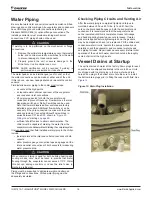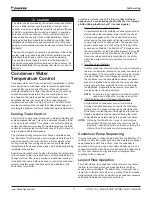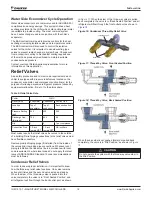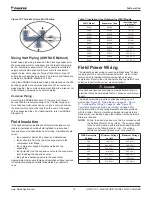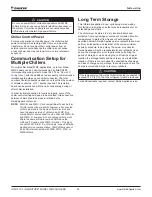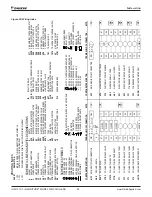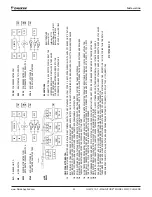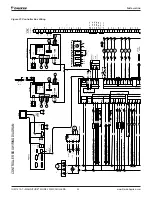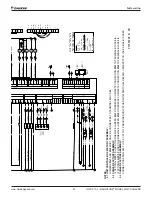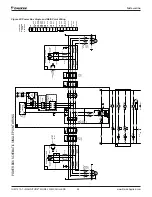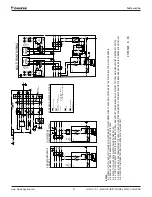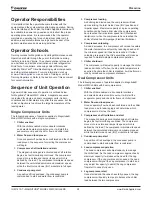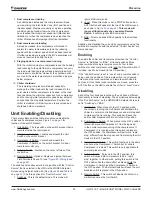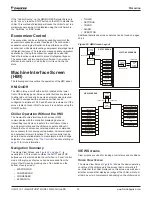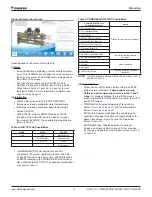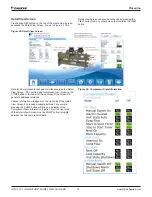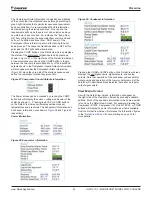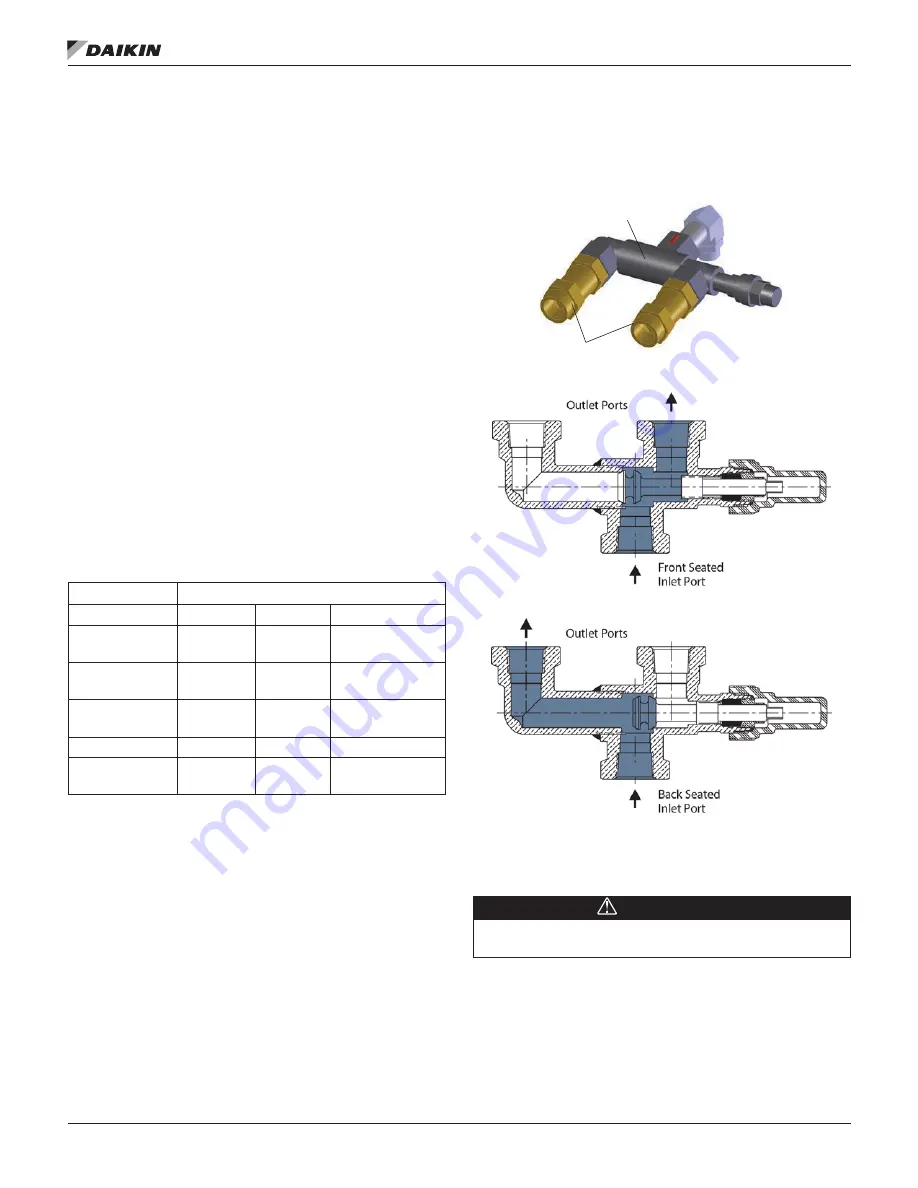
I
nsTallaTIon
IOM 1210-7 • MAGNITUDE
®
MODEL WMC CHILLERS
18 www.DaikinApplied.com
Water Side Economizer Cycle Operation
Water side economizers are commonly used for ASHRAE 90.1
compliance and energy savings. This system utilizes a heat
exchanger external to the chiller when cold cooling tower water
is available to provide cooling. The most common system
has a heat exchanger used in conjunction with the chiller’s
evaporator.
The BAS contractor will need to provide controls for the heat
exchanger including isolation valves and temperature control.
The BAS contractor will also need to control the isolation
valves for the chiller. It is important to use slow-acting type
valves to prevent rapid changes in system flows. Changeover
from economizer cooling to mechanical cooling requires one
of the methods previously mentioned to maintain suitable
condenser head pressure.
Contact your local Daikin Applied representative for more
information on this application.
Relief Valves
As a safety precaution and to meet code requirements, each
chiller is equipped with pressure relief valves located on the
condenser, evaporator, and compressor suction line(s) for the
purpose of relieving excessive refrigerant pressure (caused by
equipment malfunction, fire, etc.) to the atmosphere.
Table 6:
Relief Valve Data
Chiller
WMC
Relief Valve
Evaporator
Condenser
Suction Line*
Location
Top of
evaporator
Top of
condenser
Each suction line
Pressure Setting
(psi)
200
225
200
Discharge Cap.
(lb/min air)
75.5
84.4
6.9
Qty
1
2
1 per compressor
Connection Size
1.0-inch
female NPT
1.0-inch
female NPT
3/8-inch flare
Most codes require that relief valves be vented to the outside
of a building. Relief piping connections to the relief valves must
have flexible connectors.
Remove plastic shipping plugs (if installed) from the inside of
the valves prior to making pipe connections. Whenever vent
piping is installed, the lines must be in accordance with local
code requirements; where local codes do not apply, the latest
issue of ANSI/ASHRAE Standard 15 code recommendations
must be followed.
Condenser Relief Valves
In order to ensure proper installation, it is important to know
how the three-way relief valve functions. One valve remains
active at all times and the second valve acts as a standby.
When the stem of the three-way valve is pushed into the
valve completely, the valve is in “Front Seated Position” and
all refrigerant will flow through the back outlet port, as shown
in
. When the stem of the three-way valve is pulled
back completely, the valve is in “Back Seated Position” and all
refrigerant will flow through the front outlet port as shown in
Figure 16:
Condenser Three-Way Relief Valve
Figure 17:
Three-Way Valve, Front Seated Position
Figure 18:
Three-Way Valve, Back Seated Position
When the valve stem is not pushed forward or pulled back
completely, the valve is in “Mid Position,” as shown in
CAUTION
Do not operate the system with the three-way valve stem in
the Mid Position.
Three-Way Valve
Relief Valves













